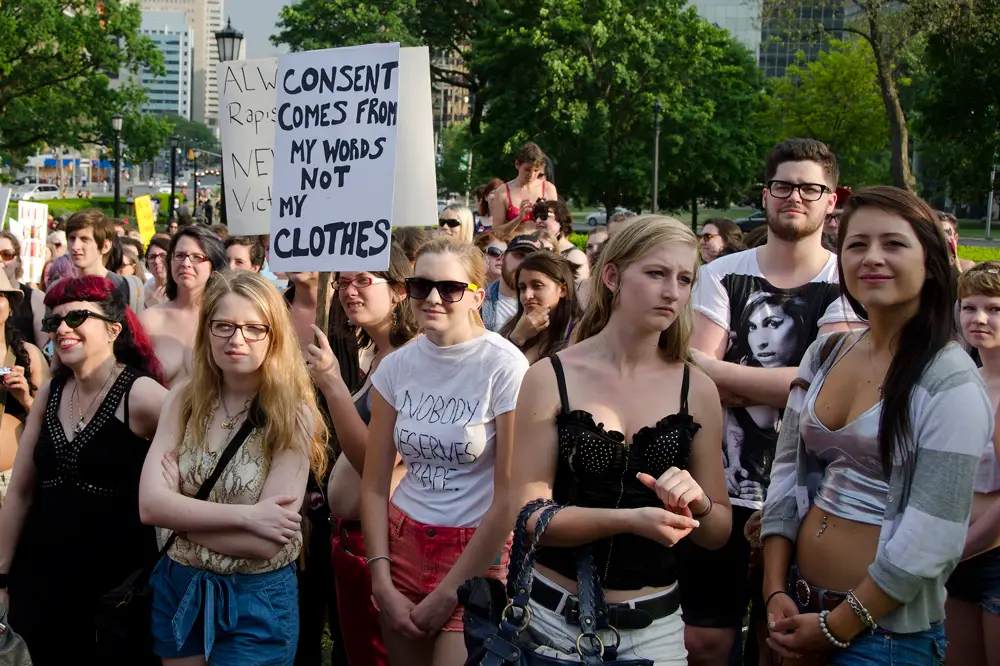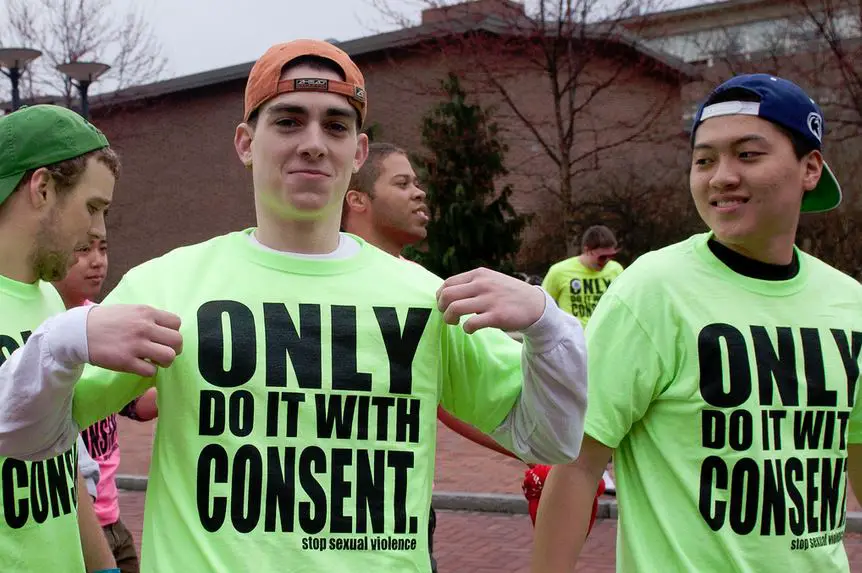“Can I kiss you now?” Given recent trends on college campuses and in state legislatures, the above question might be something that college students are about to start hearing a lot more often.
The legislation, which is intended to fight the sexual assault epidemic plaguing the nation, stems from a philosophy called affirmative consent. In contrast to plain ol’ consent, which revolves around the “no means no” slogan, affirmative consent holds as its central tenet, “yes means yes.”
What exactly does that mean? As elementary and simple as “yes means yes” might sound, affirmative consent is meant to fill the remaining gaps in sexual consent policy. More specifically, it’s supposed to eliminate the gray areas in which partners don’t say “no,” but don’t exactly consent either.
 The creators and proponents of affirmative consent posit that “no means no” is outdated and unclear, because it implies that sexual advances are welcome until the recipient works up the courage to say otherwise. Conversely, “yes means yes” conveys the message that said advances are invasive and superfluous unless the recipient verbally agrees to them.
The creators and proponents of affirmative consent posit that “no means no” is outdated and unclear, because it implies that sexual advances are welcome until the recipient works up the courage to say otherwise. Conversely, “yes means yes” conveys the message that said advances are invasive and superfluous unless the recipient verbally agrees to them.
According to the affirmative consent rulebook, the partner who seeks to take sexual contact to the next level (such as transitioning from first to second base, or from second to third) is required to obtain explicit verbal consent from the other person. And for those of you who are afraid that the Affirmative Consent Project’s insistence on asking for “clear, unambiguous and voluntary agreement to engage in a specific sexual activity” will be a mood-killer, it doesn’t always have to be as clinical as asking, “Can I touch you here?”
Something as basic as, “You okay?” suffices as an adequate check-in to ensure that everyone involved is still feeling comfortable and safe. It would even be possible to make it into a teasing, sexy game – “I want you to tell me exactly what you want me to do to you,” or, “Would you like it if I put my [insert relevant body part or vegetable] in your [insert relevant body part or fruit]?” Ideally, this would effectively put an end to sexual assault on inebriated and/or unconscious individuals, who are incapable of saying “yes.”
However, like most issues these days, the question of what qualifies as consensual sex and how it should be approached isn’t going to be solved with a single silver bullet. As many have already pointed out, affirmative consent raises just as many questions as it answers.
For example, if two partners say “yes” to sexual activity when both are intoxicated and, upon waking, one regrets it, does it count as rape? How often should partners check in with one another to make sure that everyone’s still comfortable? Every five minutes? Every ten minutes? More unsettling is the thought that if the principle of affirmative consent were applied retroactively, most of us would probably be guilty of rape of some kind or another – of not stopping to ask before we undid another button on someone’s shirt, or of taking a physical rather than verbal cue as an invitation to let our hands wander a little further.
Across the nation, other schools and state governments are picking up on the affirmative consent trend – though as of yet, California and New York are the only states to officially include it in state laws. (For a full list of states and their statuses on affirmative consent legislation, click here.)
According to nationwide surveys, one in five college women will experience some form of attempted rape.
True to its progressive reputation, California has even extended the concept of affirmative consent to high school students by recently enacting a law that requires high school sex education classes to cover affirmative consent standards. (Texas, unsurprisingly, has no reported activity regarding the adoption of such standards.)
Depending on whether the idea is adopted by schools or by the state government, however, inconsistencies may still abound—as Jennifer Medina of the New York Times points out, the fact that a college disciplinary committee has voted to adopt affirmative consent at their standard for sexual assault cases does not mean that state trials will also proceed along those lines.
Judicial logistics aside, many have voiced the more philosophical concern that simply drawing a thin blue line determining what qualifies as rape does not address the deep-seated social and cultural themes that contribute to campus rape culture—namely, the continued sexualization and objectification of the female body. Let’s be real, though—as long as Carl’s Jr. continues to advertise its burgers by placing them in the hands of scantily clad, sultry-eyed models, progress on that front is going to be slow business. According to nationwide surveys, one in five college women will experience some form of attempted rape.
Quick calculations will reveal that you probably know someone—more likely, several someones—who have been victims of sexual assault, and that’s not okay.
Will widespread adherence to affirmative consent standards end rape culture as we know it? Unlikely. Will narrating sexual activity in real time be a little awkward – “Okay….can I put my hand here now? Can I unzip your pants?” Probably.
But, as you’ve probably heard at some point already, if your partner isn’t comfortable being vocal about sex, you probably shouldn’t be having sex with them in the first place. And if there’s even a chance that the teachings of affirmative consent will save at least a few people from becoming victims of rape, then it’s definitely worth it, awkwardness or not.
And the very best part? Throw away your Netflix and Chill condoms, y’all, those are so last week. The affirmative consent starter kit (only $2.99!) contains a condom, breath mints, and a card with a starter guide to affirmative consent. Seriously. Consent has never been so sexy.








